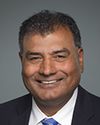The response could be quite long, so I'll pick some of the most unique best practices that we've learned over the years.
It starts really with what we learned with our operation for Syrian refugees; that is, that our department now has a better-tuned ability to set up, very quickly, mobile processing centres. We have biometric kits, as we call them, that take biometrics and they are mobile. We can move those around. We have positioned in various places our secure forms, shredders, and secure printers. We have very much fashioned ourselves in the last few years to be mobile.
The other best practice is that because our global case management processing system is all electronic now, we're literally able to work around the globe, be it in Canada or elsewhere, 24-7. Because of the time zone changes and the different cultures we work in, work days are different. That's what we call the “back office”. We've refined our back-office processes, making them much better.
The other best practice we've learned is that when you start to look at multiple forms and intake mechanisms, you need to thin down and not ask the same questions at different points of the continuum, which can be long at times. The more you do so, the more quickly people can move through.
Also, to be frank, we've invested in individuals. We've invested in people by sending them out on temporary duty. We take headquarters people and send them out to the field to do processing for up to six weeks at a time. We offer employees what are called “single assignments” to go oversees to get direct experience. We also do this in our domestic context. We are trying, then, to invest in our people to make them better and faster decision-makers.
There is also one—




